Martin Ødegaard is currently going through a real Cinderella story.
Of course, he immediately started as a ‘superstar in the making’, and soon after the European giants discovered his talents, he was snatched up by Real Madridthe European giants discovered his talents.
But things really did not go as planned.
Shortly after joining Castilla, the young star was shipped on numerous loan deals, going to the Eredivisie to play for both SC Heerenveen and Vitesse Arnhem.
It was during that time—especially while donning the latter club’s colours—that he started to make an impression again.
Naturally, his abilities progressed with each step he made and even though it was not really meteoric until his return to Spain, it was quite steady and consistent.
Fast forward to the summer of 2019 and Ødegaard went from a ‘failed Galactico’ to the ‘next Modrić’, and despite being on a two-year loan at Real Sociedad, he is bound to return to the capital to fulfil his destiny as a Los Blancos once more.
With rumours that the 20-year-old prodigy may cut his stay at La Real short, this tactical analysis scout report will look ahead to 2020 and see how exactly this superstar could fit into Zinedine Zidane’s Real Madrid and what roles Zizou could have in store for him.
Martin Ødegaard Style Of Play
Before we delve more in-depth into the tactical analysis, we have just briefly to go through Ødegaard’s player profile.
Even though the Norwegian was primarily a right-winger – seeing how he spent most of his career on that flank – his role has somewhat changed over the years, and he has transitioned to more of an attacking midfielder and a more traditional no.10.
No,w he mostly positions himself just behind the striker in Real Sociedad and’s 4-2-3-1 and can either drift wide or stay centrally with a largely free role to move across the final third.
His skill set allows him to attack from both the central and the wide channels, as well as drop deep to help progress the ball and fuel the build-up.
Ødegaard is known for his excellent passing capabilities and extraordinary technique and dribbling skills.
The only thing he still needs to develop further is his defensive contributions.
With Real Sociedad’s system revolving around good counter-pressing tactics, he is often the man to snatch the ball in the opposition’s half but not always the first to track back and defend in deeper areas.
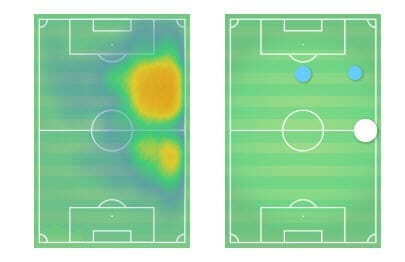
Developing that trait, however, might prove vital if he is to succeed at Real Madrid.
But more on that later.
This tactical analysis will now go through three main systems that Zidane could potentially use to incorporate the 20-year-old starlet into his lineup.
4-3-3 right-wing
Zidane’s most-used lineup in the 2019/20 campaign – as seen in 52% of all games in the current season – is the traditional 4-3-3 with a front three comprising of two wide players and a no.9 in the form of Karim Benzema.
In most scenarios, Eden Hazard will be on the left while the right can go to either of Gareth Bale, Rodrygo Goes or Vinicius Junior.
Still, with the Welshman practically already out of the team, the spot is left to either of the two Brazilian talents and at the moment, Rodrygo seems like the preferred option for the French manager.
With the introduction of Ødegaard into this system, however, it is likely that Zidane would decide to put the 20-year-old in his old position and deploy him as a right-winger, therefore benching either of the Brazilians to accommodate the Norwegian.
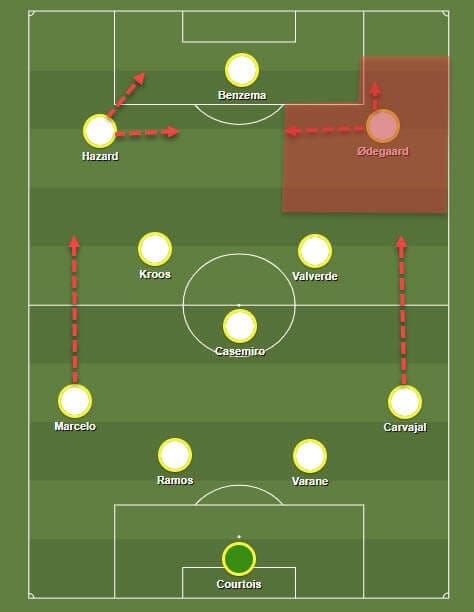
In this scenario, as seen above, Ødegaard would have free reign over the right flank but would mostly still be able to drift inside and position himself behind Benzema.
This would be a necessity as Real Madrid almost exclusively play with attacking full-backs who overlap and charge into the final third.
Ødegaard drifting towards the middle channel would then open the path for Daniel Carvajal to burst into, while the youngster would then slot into his usual position behind the striker.
We have seen him do that before and back during his national team endeavours.
For Norway, Ødegaard would sometimes be deployed as an out and out winger, but only on paper.
Notice below how he receives the ball deeper and then cuts inside for his teammate to overlap and burst into space.
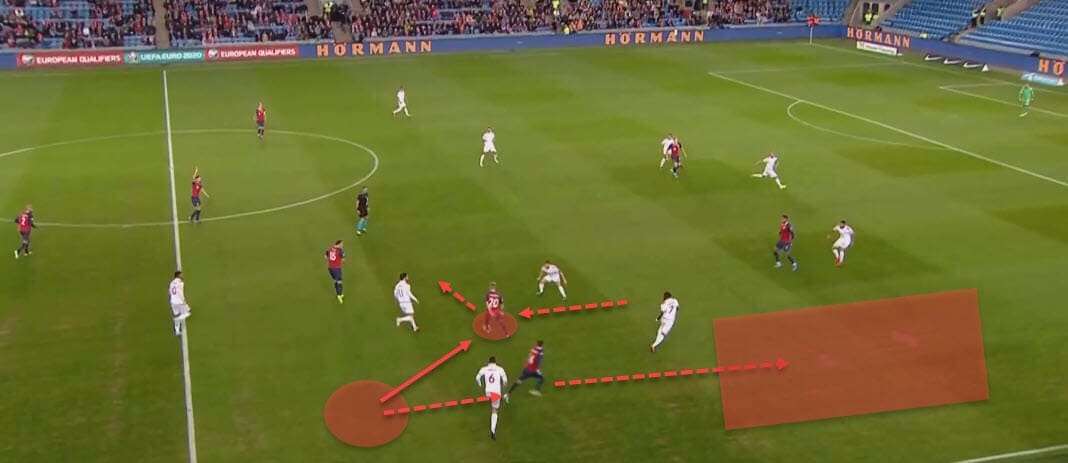
This is something that Zidane should definitely look to utilise in the youngster’s arsenal – dropping deeper and then creating space.
His movement prompts the collapse of the opposition’s defenders, creating free pockets in other areas that his teammates can use.
In Real Madrid’s case, this would be perfect for Carvajal’s overlaps, as a similar type of movement can be seen in Los Blancos’ tactics.
The only issue here would then be with Hazard on the other flank.
Despite Real Madrid playing with two wide men, one usually drifts into his respective half-space—Hazard does that—and the other, usually one of the three mentioned above, is more of a traditional winger, bursting into space and stretching the defensive line.
However, with both Ødegaard and Hazard starting, Zidane would have two similar wingers and would have to tweak his tactics so that they do not step on each other’s toes too much.
Luckily, the Belgian is far more advanced than Ødegaard in his movement on his flank, which means that in theory, Ødegaard would be the one dropping deeper and surging through the middle.
At the same time, Hazard would then stay higher and wider on the left.
In that scenario, we would likely see interchanges between the two, with the Norwegian often setting up the Belgian on the other side with long and accurate balls into space, as he can be seen doing for Real Sociedad in the example below.
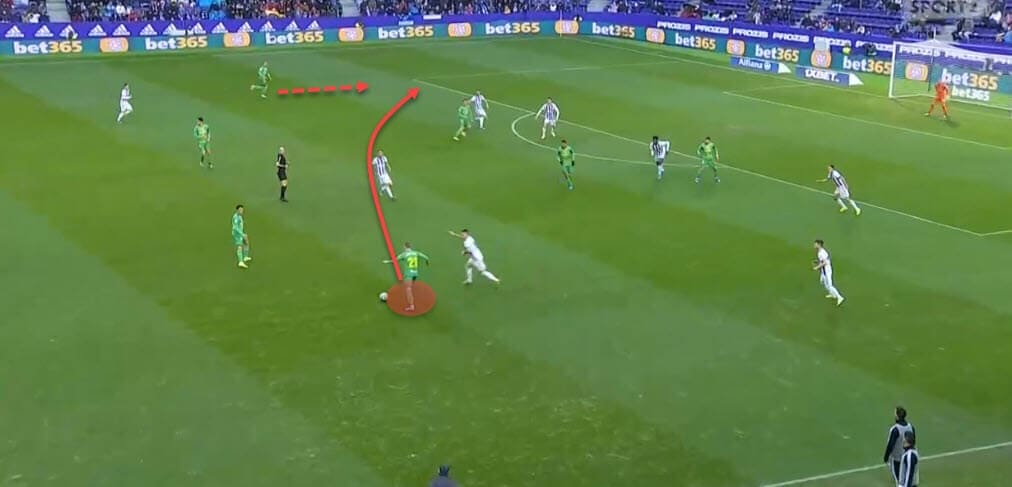
Of course, this works with both Hazard and Marcelo, as it is likely that Ødegaard would pick up either of the two with his precise passes.
At the time of writing, he averaged 2.23 long balls and 3.2 through passes in 2019/20, with 54.3% and 39.4% accuracy, respectively.
He is used to swapping sides effectively, especially from deeper pitch areas.
With him and Hazard positioning themselves on different platforms and with Zidane’s slightly tweaked roles, the problem of them having too similar duties could potentially be ironed out.
Finally, we could see him combine well with Hazard or Benzema, surging forward and the midfielder feeding them with through balls behind the defensive line.
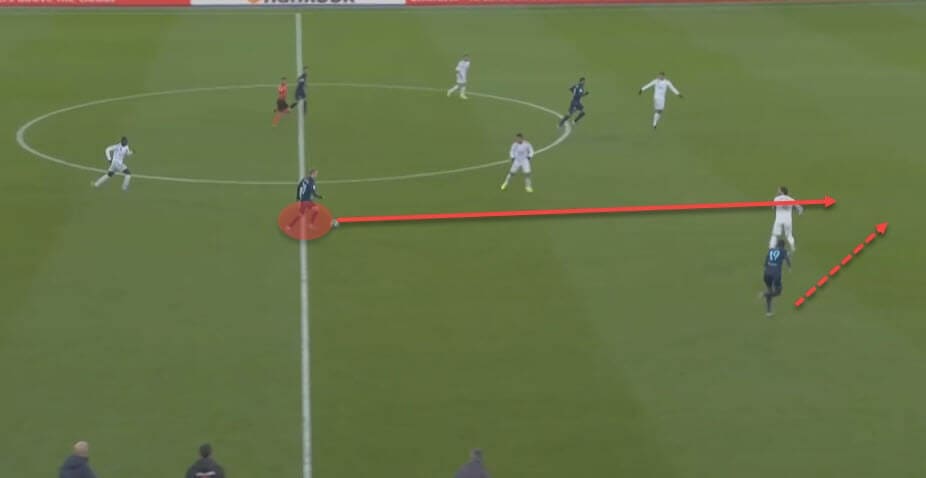
Above, you can see how a transition is immediately started with Ødegaard and, poetically enough, against Real Madrid, of all teams.
In scenarios where Hazard and Benzema would stay higher and Ødegaard would carry the ball from his own half, the opposition would have difficulty stopping the attack.
Even though the 4-3-3 with him as the right-winger is not exactly the best option, Zidane could also make it work with slight tweaks to the positioning and roles of his forward line.
4-4-2 diamond/ The Isco role
Arguably, the most suitable system for Ødegaard to thrive in at Real Madrid is the 4-4-2 diamond.
Granted , the system with two up front followed by a quartet of midfielders has only been used in 8% of the games in the current campaign, so Zidane does not practice it often.
But it is still something that can be really effective considering the personnel at his disposal especially with the Norwegian potentially in his ranks.
In such a setup, Ødegaard would get his preferred no.10 position at the tip of the diamond and would then be deployed just behind Hazard and Benzema in the forward line.
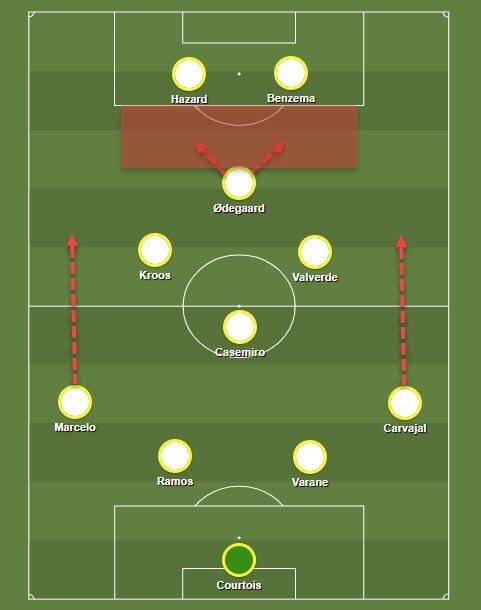
Interestingly enough, we’ve seen Real Madrid in this exact setup in the Champions League when they faced Paris Saint-Germain.
Despite sharing the spoils of war in a 2-2 bout, the Galacticos largely dominated the clash and would have been the deserved winners were it not for some individualistic heroics from the Saints.
And at the heart of their team? Isco.
It is true that Isco has fallen down the pecking order recently and could even be close to leaving the club, but his role is exactly the same one in which Ødegaard thrives.
Against PSG, Isco had a free reign across the final third and would even drop deep to collect the ball and assist in the build-up.
His task was to break the lines or position himself between them and then feed the attacking duo with balls from his platform.
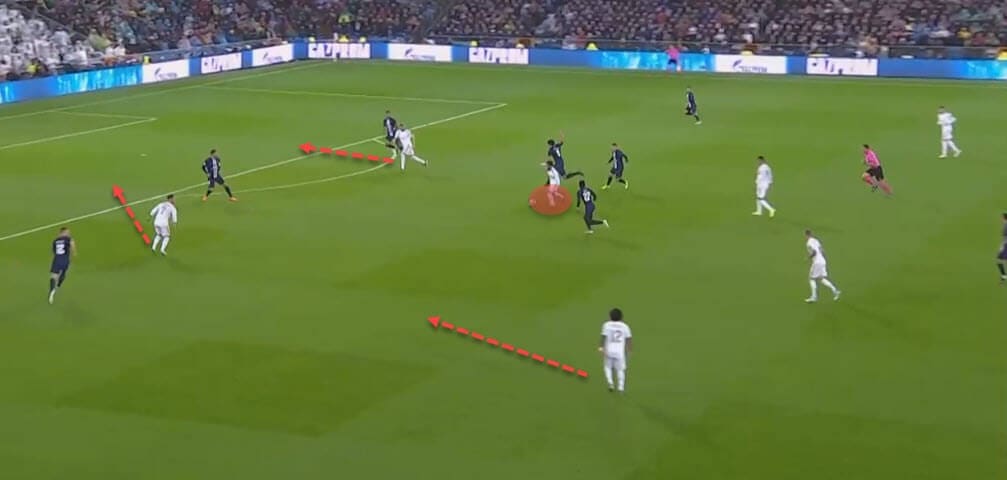
Notice above where he receives the ball.
His task is to control it under pressure and in enemy territory and then lay it off for one of his teammates to make the run.
Sometimes, as in the example shown, that does not necessarily mean he will always go for the killer through ball but will rather bring teammates into play, such as Marcelo who is bursting forward in this case.
When we look at his action and pass map from the game against PSG, we can see that Isco is very much marshalling the pitch, moving from one side to the other, dropping deep, and surging forward when needed.
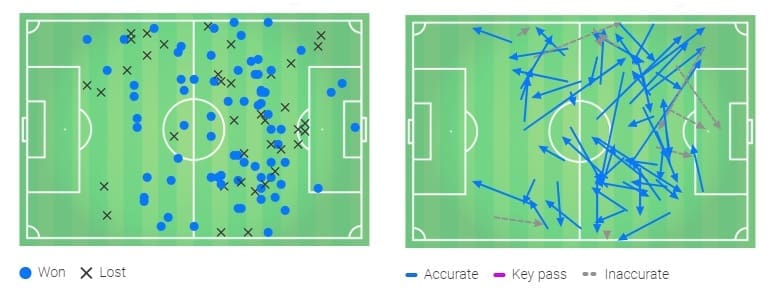
Interestingly enough, we were used to seeing this with Isco during Zidane’s first spell in charge, especially during the 2016/17 season.
Back then, the now-forgotten ace was a pretty important piece of the Real Madrid jigsaw, and this performance vs PSG was a great throwback to those times.
If we inspect his heatmap from that season, it tells us very much the same story: Isco is all over the pitch and is involved in all the proceedings on the pitch, which is something Ødegaard would have to do as well if he was to be played in this position.
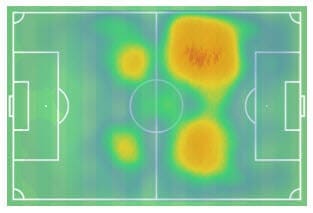
But this role would be perfect for him on paper.
We’ve already discussed how he likes to receive the ball in deeper areas and then progress it forward.
This is somewhat of his trademark move at Real Sociedad, as he is the team's hub.
Off the ball, however, we can often see him in the area highlighted in the first graphic in this 4-4-2 diamond section—around zone 14 and just behind the striker(s).
This is where he is most dangerous.
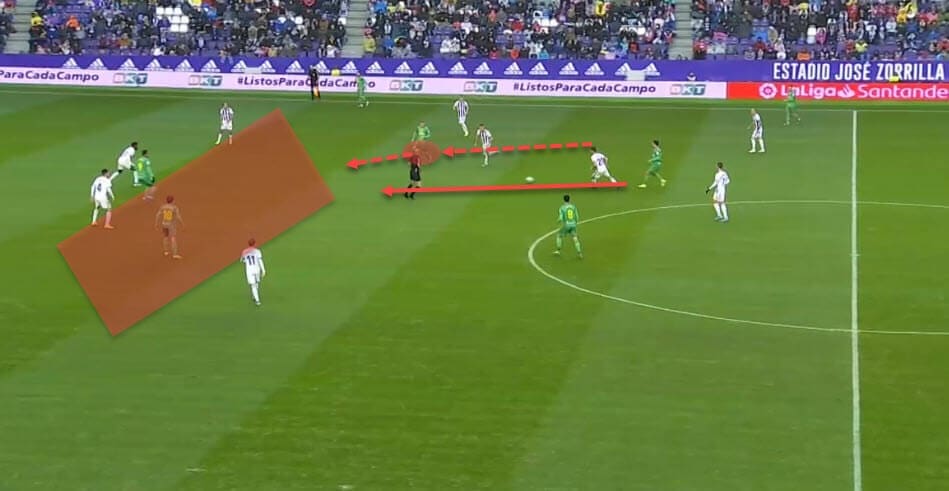
Notice in the example above how he plays a quick one-two with his teammate and then surges forward from a deeper position to fill the space between the lines where he can be an immediate danger for the opposition.
Of course, a huge part of his contribution at Real Madrid would be unlocking a deep and compact block of the defenders.
With the Spanish giants mostly being on the front foot and forcing the opponent to turtle up while they circle around them, it is possible that Ødegaard would be the man tasked with finding creative solutions to that problem.
This is exactly where his smart passing and dribbling come to fruition.
The Norwegian has already faced low blocks during his stay at Real Sociedad and usually has something in his locker to overcome them.
After all, he is the player with most smart passes and also the most accurate in La Liga with 63 and 49.21%.
He also finishes second in smart passes deployed per game with 4.18.
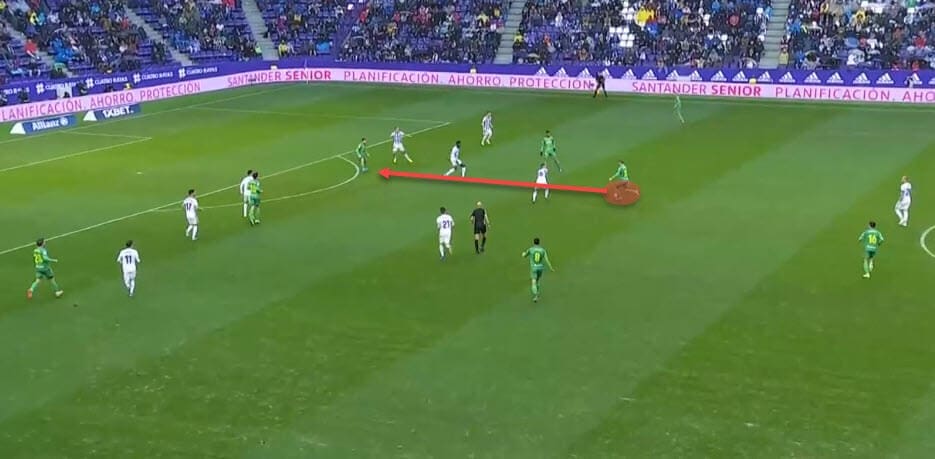
Notice above how he can break multiple lines with a simple, smart pass that finds his forward and lands directly at his feet.
This is the kind of passing that Real Madrid would need from their no.10, and Isco has always been able to provide it.
But the Spaniard is also very technical, which is a requirement for this role.
Luckily, Ødegaard can boast immense technique and brilliant dribbling capabilities.
At the moment of writing, the Norweigan averages 6.1 dribbles with 67% accuracy.
This helps both his progression of the ball from the deep – seeing how he ranks second in deep completion with 51 in La Liga and also second in the same category but with deep completion per game with 3.38 – and with beating his man in and around the box.
Needless to say, he is well-equipped to take this role and make it his own but will also have to realise that he would be marshalling more than just his side of the pitch.
Looking at his heatmap from the beginning of this tactical analysis, it seems that he is no stranger of swapping sides and dropping deep but a step up to Real Madrid would also mean more responsibility for the youngster.
4-3-3 central-midfielder / The Luka Modrić role
Much has been said about Ødegaard being Modrić’s successor at Real Madrid.
Even though he could potentially grow into that role, it still feels like he would have to refine some of his other skills to fully emerge as the ‘new Modrić’.
In a scenario where he replaces the Croat in the lineup, he would most likely be deployed next to Toni Kroos and just ahead of Casemiro. Still, in.
Of course, it is possible that Zidane inverts the trident and plays with an offensive midfielder as well.
Still, in a more usual scenario, this could potentially look something like the lineup you can see below.
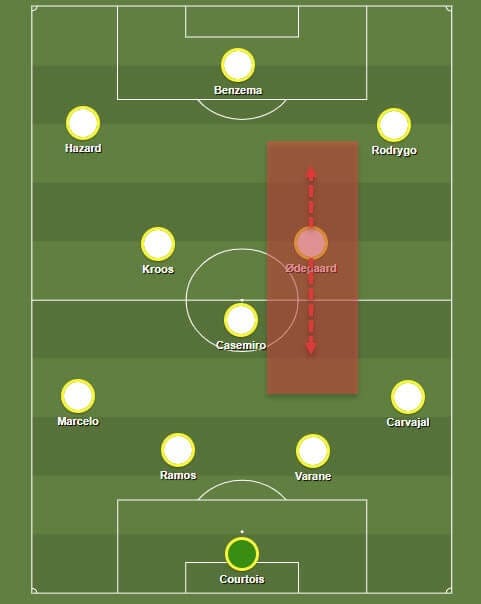
However, if we compare the two players’ profiles directly, it is obvious that they are not exactly alike.
Ødegaard is an advanced playmaker while Modrić is more of a box-to-box midfielder when compared to the youngster but that description hardly does him justice.
The Croat is like a midfield general, pulling the strings, dictating play, and being a utility man simultaneously. This means that he can slot across various positions on the pitch and fill the voids he should not be able to on paper.
Ødegaard is highly involved in his team’s attack, true, but Modrić’s involvement is felt in all phases of the game, from the defensive duties to the build-up play and finally in the final product as well.
Let’s take a look at his heatmap from 2019/20 below.
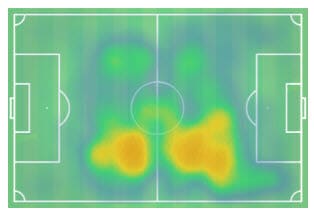
At first glance, it is fairly similar to Ødegaard’s.
Both players mainly operate on the right, and they seem to drop deeper when necessary.
But Modric spends an equal amount of time both in his and the opposition’s half and that would probably be the best explanation to Ødegaard’s potential duties if he were to take over the mantle.
This is even more evident when we examine one of his pass and duel maps in the following example.
We can see a variety of pass types all across the pitch and duels from his box to the edge of the opposition's.
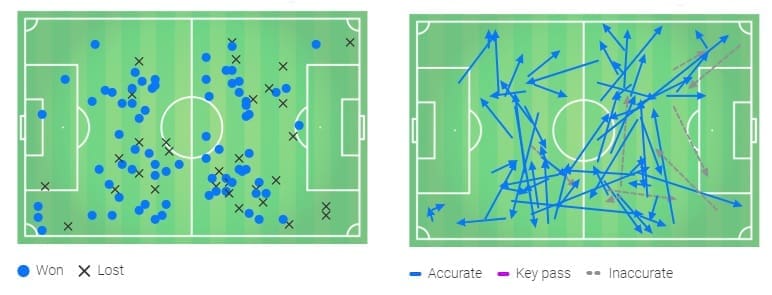
When we compare it to a fairly average pass map from Ødegaard, it is pretty clear that he still has not experienced that kind of responsibility despite being a star player practically everywhere he went.
You can see his duel and pass maps down below.
One thing that’s worth noticing is how Ødegaard often keeps to his side of the pitch and rarely goes deep into his own defence to challenge for the ball.

That is not to say that his defensive contribution is non-existent.
After all, at the moment of writing, he is still the player with the most possessions won in the opposition’s final third among all other players in La Liga, and his pressing is crucial to La Real’s tactics.
This, paired with his ability to lead the line during transitions, as he aims always to present an outlet for his team, rounds up his defensive efforts.
Although they are not insignificant, they do somewhat pale in comparison to what he would have to do if he were to take over the torch from Modrić.
The most notable thing, however, is his effort to track back and work on combating the potential overloads of their wide areas.
This is especially problematic when teams hit them on the counter since Ødegaard often stays higher or retreats slowly, leaving his team in an unfavourable position and in a numerical disparity.
Notice below how Real Madrid executes this perfectly.
With Ødegaard jogging back and not even in the frame, Hazard can easily combine with either of his teammates.
It’s a 3v3 situation before enough Real Sociedad troops can return to their shape.
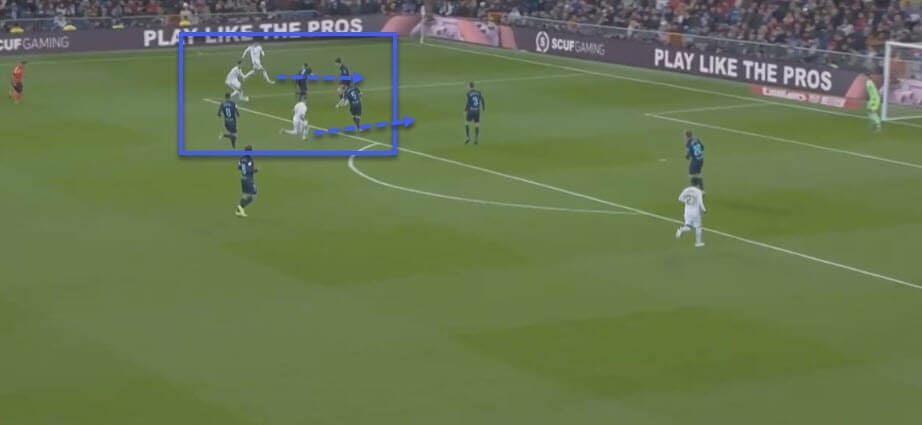
The above example is an isolated case, granted. Still, it highlights the player’s reluctance to do the dirty part of the work – namely, something Modrić would often be tasked to do – and definitely a part of his arsenal that still needs polishing.
Even though his creativity and technique on the ball are on par and may even eclipse those of the Croat, it still feels like Real Madrid would need to pair him up with defensively stronger teammates who are willing to share the load.
Of course, Los Blancos do have Casemiro in that deeper role but Modrić is often the one who helps the Brazilian break up the opposition’s progression.
Kroos does his share as well but also not on the level of the Croatian Ballon d’Or winner.
In a team that would then have Hazard, Benzema, a right-winger and Ødegaard in its ranks, is a fairly attacking-minded one and could easily be overrun by a well-structured squad on the other side.
Therefore, the ‘Luka Modrić’ role might not be an option for the Norweigan just yet, especially with Federico Valverde’s rise to prominence and whispers of a certain Paul Pogba potentially arriving soon.
Final remarks
Martin Ødegaard might definitely be among the best talents currently plying his trade in La Liga or even in Europe as a whole.
Even though there are still rumours of him potentially returning to Real Madrid earlier than expected, it is also equally likely that he stays at La Real and continues his development there until his loan deal comes to an official end.
Regardless of that, there is certainly a place for him at the Santiago Bernabeu, but Zidane would have to tweak, his tactics and the systems he likes to use to accommodate the youngster.
Of course, the Norwegian Galactico still has a long way to go until he fully emerges from his cocoon, but once he does, the world will know.
Does his future lie at Real Madrid? At this point, it is already just a matter of time.

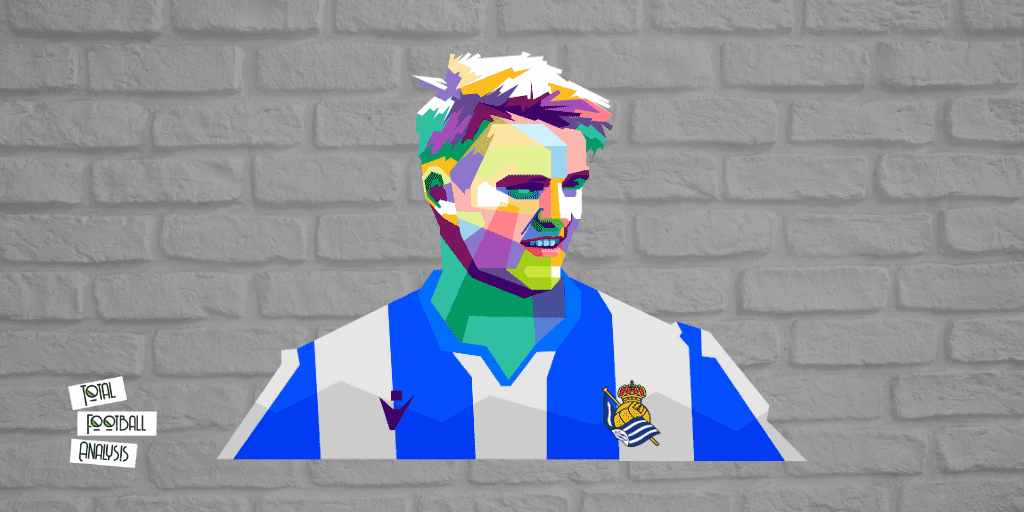




Comments